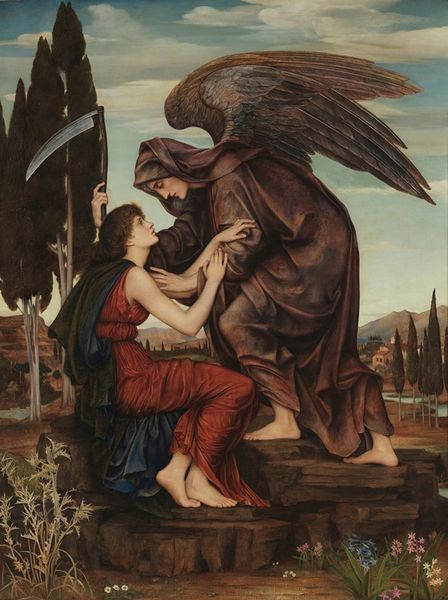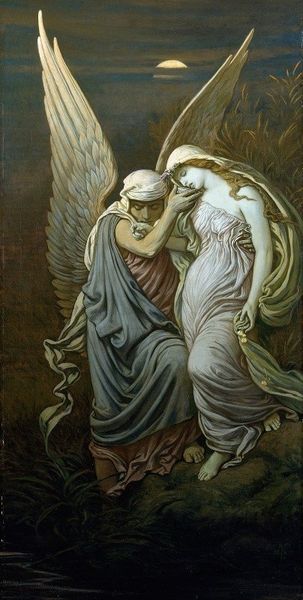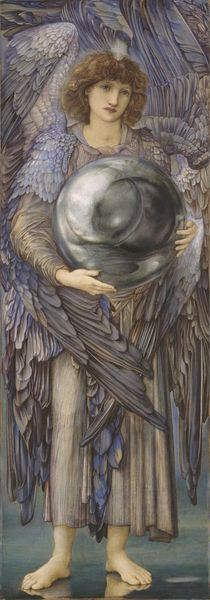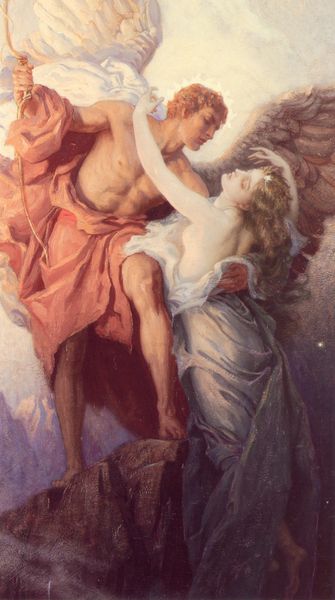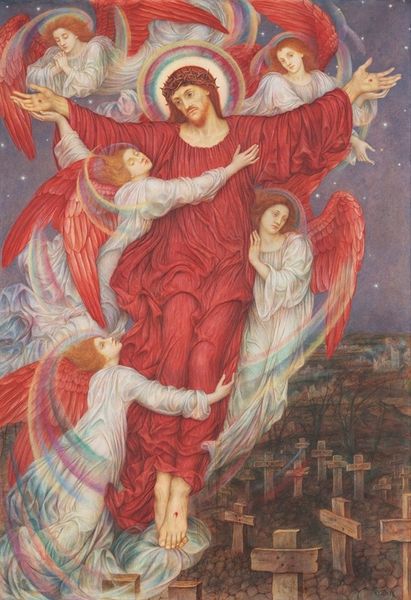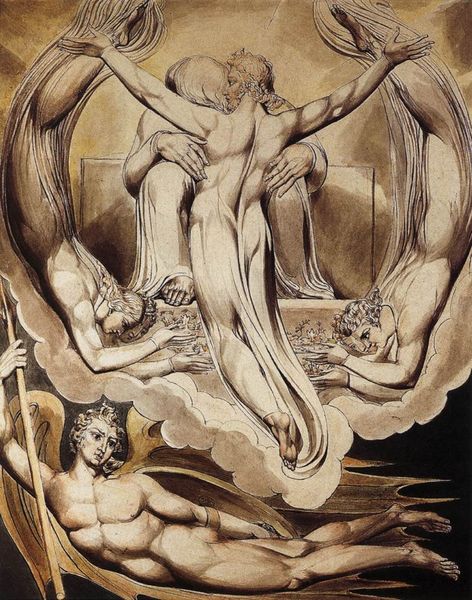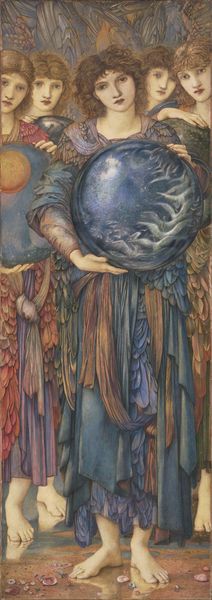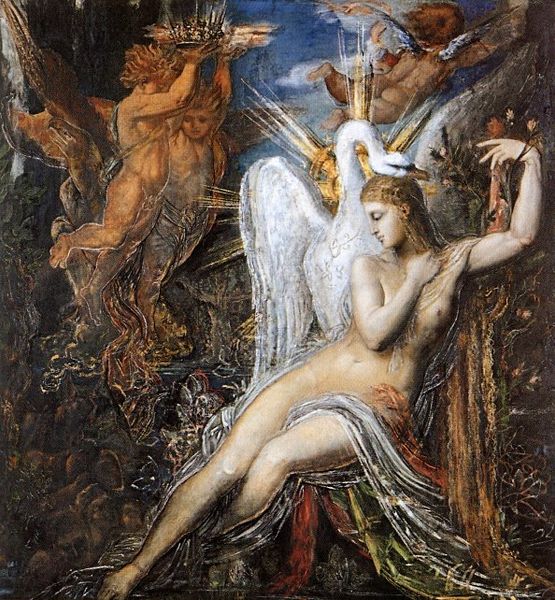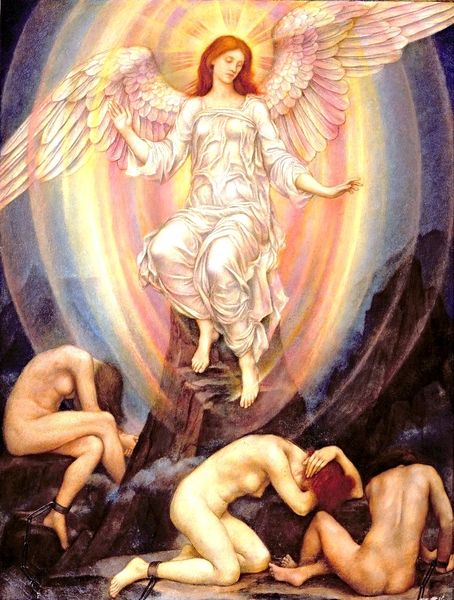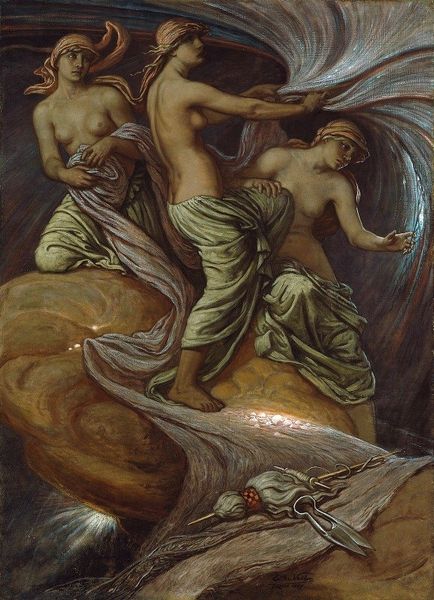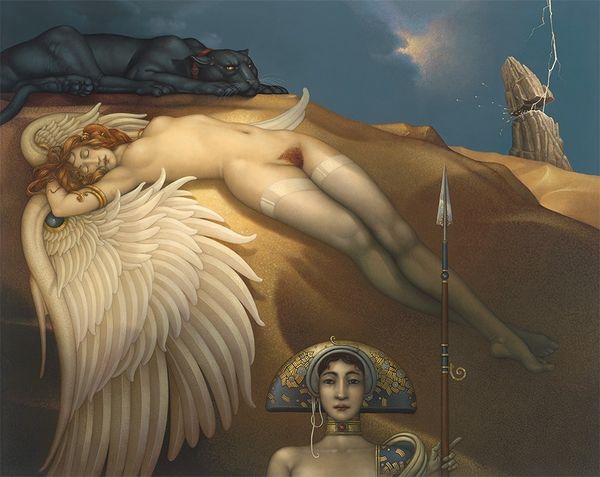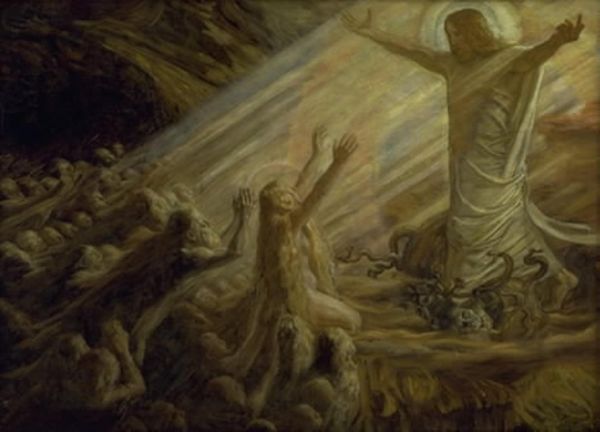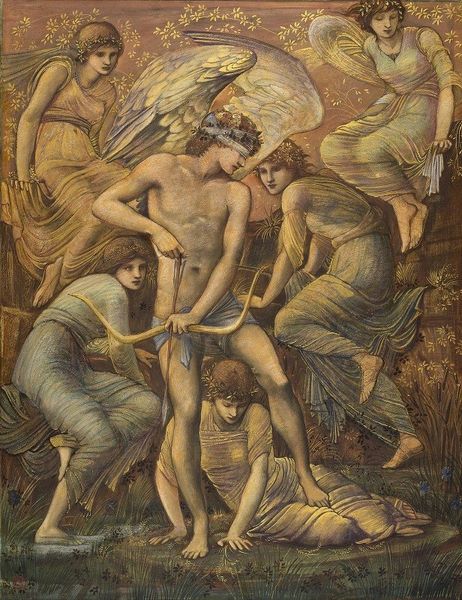
painting, oil-paint
#
portrait
#
allegory
#
painting
#
oil-paint
#
landscape
#
figuration
#
oil painting
#
romanticism
#
mythology
#
painting painterly
#
symbolism
#
history-painting
Copyright: Public Domain: Artvee
Editor: So, here we have Evelyn De Morgan’s painting, *The Field of the Slain*. It appears to be an oil painting, though it’s undated. What strikes me immediately is its somber mood and how the central figure seems to be protecting or collecting the heads of fallen soldiers. What do you see in this piece, particularly in its relation to the period it was created? Curator: De Morgan painted this work against the backdrop of immense social and political upheaval. How do you see the angel's gaze connecting with ongoing conversations about war and mourning? Consider its symbolism and her pacifist views. Editor: I see the angel's somber gaze as representing mourning and the profound cost of war. Was it common for women artists to critique war so overtly? Curator: While not always overt, many women artists used allegory and symbolism, as De Morgan does here, to express anti-war sentiments, circumventing the male-dominated narratives of heroism. Think about how the very act of depicting suffering countered the glorification of battle, offering a powerful feminist perspective on war's devastating impact on individuals and communities. The angel is not triumphant but burdened, right? Editor: Right, she looks burdened. And the heads almost look like souls, adding a spiritual element to the earthly suffering. I guess by portraying war in this way, De Morgan challenged the dominant narratives and gave a voice to the voiceless victims. Curator: Exactly. The layering of symbolism invites us to contemplate the intersections of gender, power, and the devastating consequences of conflict, prompting a deeper understanding of history through an intersectional lens. Editor: This really shifts my perspective. I initially saw a mythological scene, but now I understand it’s a powerful social commentary. Curator: It's a potent reminder of how art can function as a mirror reflecting society's ills while simultaneously offering a vision for a more just world.
Comments
No comments
Be the first to comment and join the conversation on the ultimate creative platform.
